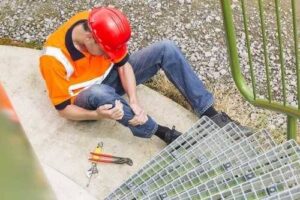Construction sites are inherently hazardous environments, and accidents can happen despite strict safety regulations. If you’ve been involved in a construction accident in Texas, it’s crucial to gather and document evidence to strengthen your case. Willumsen Law Firm, P.C. understands the complexities of construction accident cases and is committed to helping you build a solid foundation for your claim. In this comprehensive guide, we will walk you through the essential steps and requirements for documenting evidence in your Texas construction accident case.
Photographic Documentation
One of the most effective ways to preserve evidence is through photographs. Take clear and detailed photos of the accident scene, including any equipment, machinery, or tools involved. Capture the overall site layout, potential safety hazards, and the conditions that led to the accident. Additionally, document any safety signage or lack thereof. These images can provide crucial visual context during legal proceedings.
Injury Documentation
Photograph and document your injuries immediately after the accident and throughout the recovery process. This includes bruises, cuts, fractures, or any other visible injuries. Keep a record of medical reports, prescriptions, and treatment plans provided by healthcare professionals. This documentation helps establish the extent of your injuries and their impact on your life.
Witness Statements
Collect statements from any witnesses who saw the accident occur. Their firsthand accounts can significantly strengthen your case by providing additional perspectives and insights. Ensure that witnesses include their contact information so they can be reached during legal proceedings. Willumsen Law Firm, P.C. can assist in coordinating with witnesses and obtaining sworn statements to support your claim.
Incident Reports
If your employer or the construction site management has an official incident reporting process, make sure to file a detailed report as soon as possible. Request a copy of this report for your records. Such documentation may include details about the accident, the parties involved, and any immediate actions taken to address the situation. These reports can serve as important pieces of evidence in establishing liability.
Safety Regulations Compliance
Evaluate whether the construction site adhered to safety regulations and standards. This includes checking for compliance with Occupational Safety and Health Administration (OSHA) guidelines and any other relevant local regulations. Non-compliance may indicate negligence on the part of the site management or other responsible parties.
Maintenance Records and Inspections
Obtain maintenance records for the equipment and machinery involved in the accident. Regular inspections and proper maintenance are crucial for ensuring the safe operation of construction tools. If inadequate maintenance or faulty equipment is identified, it could be a key factor in establishing liability.
Expert Opinions and Testimonies
Engage professionals such as safety experts or engineers who can provide expert opinions on the conditions that led to the accident. Their testimonies can carry significant weight in court and help establish the negligence or liability of the responsible parties.
Employment and Insurance Records
Gather your employment records, including contracts, pay stubs, and any communication related to your role at the construction site. Additionally, obtain information about the insurance coverage of both your employer and any other relevant parties involved in the accident. Understanding the insurance landscape is crucial for determining potential sources of compensation.
Legal Consultation with Willumsen Law Firm, P.C.
Navigating the legal complexities of a construction accident case can be overwhelming. Willumsen Law Firm, P.C. specializes in personal injury cases, including those related to construction accidents. Schedule a consultation with our experienced attorneys to discuss the specifics of your case and receive personalized guidance on the next steps.
Timeline of Events
Construct a detailed timeline of events leading up to, during, and after the accident. Include specific dates, times, and actions taken by various parties. This chronological sequence can help establish the sequence of events and identify any patterns of negligence or disregard for safety protocols. Providing a clear timeline can be instrumental in illustrating the circumstances surrounding the accident.
Communication Records
Retrieve any communication records related to the accident. This may include emails, text messages, or memos exchanged between you, your employer, co-workers, or site management. Pay attention to any discussions about safety concerns or previous incidents that might be relevant to your case. These records can serve as additional evidence of negligence or knowledge of potential hazards.
Weather Conditions
Consider the weather conditions at the time of the accident. Documenting weather-related factors, such as rain, wind, or extreme temperatures, can provide context to understand if these conditions played a role in the incident. Adverse weather may contribute to hazardous working conditions and serve as a contributing factor in your case.
Surveillance Footage
Check for any surveillance cameras in the vicinity of the accident. If available, obtain footage that captures the incident and its aftermath. Surveillance footage can be a powerful piece of evidence, providing an unbiased account of the events as they unfolded. Work with your legal representation to secure and analyze this critical evidence.
Documenting evidence is a critical aspect of building a strong case after a construction accident in Texas. The thorough collection of evidence ensures that you have a comprehensive foundation to support your claims and seek the compensation you deserve. Willumsen Law Firm, P.C. is dedicated to helping you throughout this process, providing expert legal advice and representation. Don’t navigate this challenging time alone—reach out to us today for a consultation and take the first step toward justice. Your well-being and fair compensation are our top priorities.
